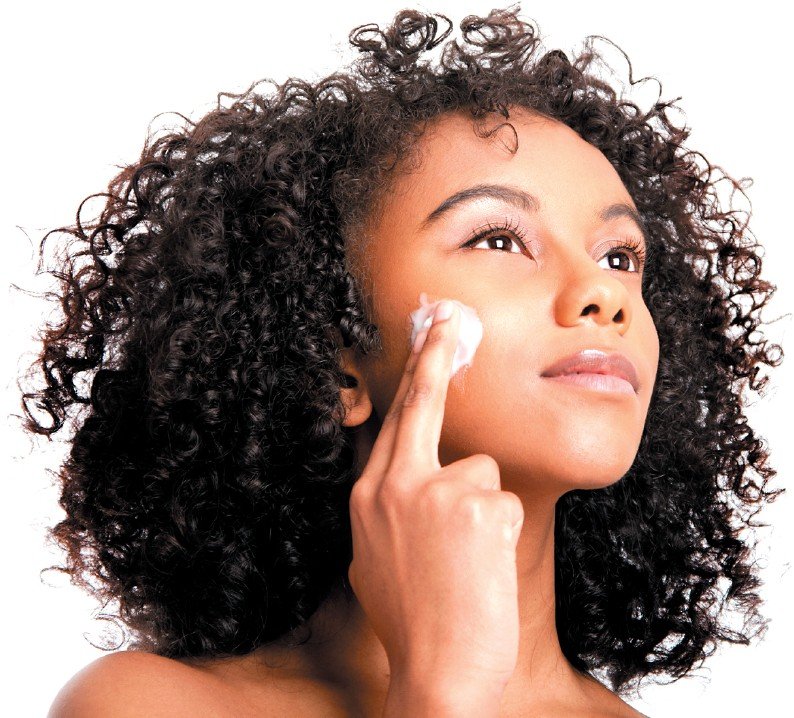SKIN COLOUR: Role of Cosmeceuticals
SKIN COLOUR: Role of Cosmeceuticals
Dr Amarendra Deka MBBS. MS
Ageing is an inescapable biological process, a natural physiological phenomenon, and the skin you see provides one of the first markers of the signs of ageing.
The three primary structural components of the skin dermis: collagen, elastin, and glycosaminoglycans, have been the focus of much of the research in this field. Preventing their degradation is necessary in order to mitigate the ageing process, i.e. the appearance of wrinkles.
There are two main groups of agents that can be used as anti-ageing product components: antioxidants and cell regulators.
ANTIOXIDANTS
Antioxidants form one of the most popular groups of cosmeceutical ingredients that are used today.Antioxidants reduce collagen degradation by decreasing the concentration of free radicals in tissues by blocking the oxidative processes in cells.
Vitamins C (L-ascorbic acid), B3 (Niacinamide), and E (α-tocopherol) are the most commonly used antioxidants due to their ability to penetrate the skin through their small molecular weight.
Vitamin C in concentrations between 5 and 15% was proven to have a skin anti-ageing effect by inducing the production of collagen (Col-1 and Col-3), as well as enzymes necessary for the production of collagen, and inhibitors of matrix metalloproteinase-1 (MMP-1)
Niacinamide (vitamin B3) regulates cell metabolism and regeneration, and it is used in 5% concentration as an anti-ageing agent. Vitamin E (α- tocopherol) used as a component of skin products has anti-inflammatory and anti-proliferative effects in concentrations between 2 and 20%. It acts by smoothing the skin and increasing the ability of the stratum corneum to maintain its humidity, to accelerate the epithelialisation, and contribute to the photoprotection of the skin.
VITAMIN A AND ITS DERIVATIVES
Retinol is the naturally occurring form of vitamin A found in red, yellow, and orange fruits and vegetables. Retinol can be oxidised to retinaldehyde and then oxidised to retinoic acid, also known as tretinoin.
It is this cutaneous conversion of retinol to retinoic acid that is responsible for the biological activity of some of the new stabilised vitamin A preparations designed to improve the appearance of photodamaged skin.
The conversion process consists of retinyl palmitate → retinol →
retinaldehyde → retinoic acid (tretinoin).
The closer a compound is to retinoic acid on this cascade, the more readily it can be converted, and the more effective it becomes. It has been shown to improve the feel of firmness and elasticity as well as reduce the appearance of fine lines, wrinkles, and rough skin. Recent studies have revealed the efficacy and safety of new anti-ageing creams containing retinaldehyde at 0.1% and 0.05% that can be used to treat photoaged skin.
PEPTIDES
The natural ageing of skin results in decreased production and increased degradation of extracellular matrix proteins such as collagen, fibronectin, elastin, and laminin. Matrix metalloproteinases form an important family of metal-dependent endopeptidases that represent the primary class of enzymes responsible for the degradation of components of the extracellular matrix and thereby contribute to ageing. The extracellular matrix, in addition to providing structural support, also influences cellular behaviour such as differentiation and proliferation.
These functions are mediated through small peptides (matrikines) derived from the proteolytic degradation of extracellular matrix proteins.
Recently, short, stable, and synthetic peptides have been developed that have a role in extracellular matrix synthesis, pigmentation, hair growth, innate immunity, and inflammation.
These polypeptides or oligopeptides are composed of amino acids and can imitate a peptide sequence of molecules, such as collagen or elastin. Through topical application, polypeptides have the ability to stimulate collagen synthesis and activate dermal metabolism.
The advantages of using peptides as cosmeceuticals include their involvement in many physiological functions of the skin, their selectivity, and their lack of immunogenicity.
TRANEXAMIC ACID
Tranexamic acid (TXA), an anti-fibrinolytic drug, is now gaining popularity as a depigmenting agent. By reducing prostaglandin
production, TXA reduces the melanocyte tyrosinase activity and plays an essential role in the treatment of melasma, ultraviolet-induced hyperpigmentation, and other post-inflammatory hyperpigmentation. It has been tried topically, orally, and intradermally in the management of melasma with minimal adverse effects. Orally, it is used in a dose of
250 mg twice daily for 3 months.
|
Suggested basic cosmeceuticals regimen for skin colour |
|
|
1 |
Face wash with brightening actives eg glutathione soap ( Grolvita soap) |
|
2 |
Sunscreen with sun protection factor 30-50, particularly with tint for camouflage |
|
3 |
Vitamin C and vitamin E based cream |
|
4 |
Moisturising creams containing peptides or hyaluronic acid |
|
5 |
Oral glutathione effervescent tablet daily (Grolvit forte) |
Topical TXA shows rapid and more sustained results with very minimal adverse effects as far as epidermal melasma is concerned, and the drug has been proven to have almost similar cumulative effects as hydroquinone and dexamethasone. Formulations of 3% or 5% twice- daily are recommended.
The dermal and mixed variants of melasma are highly treatment- resistant. In such cases, TXA may be administered intradermally. The microneedling method proves to be efficacious in the intradermal delivery of the drug. In this method, multiple micro-injuries are made in the dermis, using a dermaroller and this facilitates the transport of substances through various transport channels, leaving the epidermis intact.
GLUTATHIONE
Glutathione (GSH) was first discovered by Hopkins in 1921 in yeasts, and subsequently in other tissues. It has the potential to lighten human skin. There are no data on adverse effects of chronic high-dose GSH as used for skin lightening. Effective topical GSH may be useful for dermatologists treating hyperpigmentation. Patients should be advised to avoid using GSH with over-the-counter skin lightening creams that may contain mercury. It is used as soap, face wash , cosmetic cream, oral tablet and intravenous injection. Oral glutathione of 600 mg in combination with astaxanthin 2mg (Grolvit forte tablet. w ww.vacslife.in) is most effective formulation for skin whitening and should be taken once daily for 3-6 months.
CYSTEAMINE
A derivative of the amino acid, L-cysteine, cysteamine hydrochloride, an older agent found to have depigmenting properties has been recently shown to have promising results. The malodour associated with it was initially a challenge but the development of agents to neutralise it while preserving its pigment suppressing properties has helped bring this agent to the forefront lately. The regimen involves a topical 5% formulation that is to be applied daily at night over the entire face and to be washed off after a 15 minute contact time. This is to be applied for 4 weeks followed by a maintenance regimen of twice weekly application for 4 more weeks. The use of cysteamine has been considered relatively safe.

CONCLUSIONS
The impact of social media and marketing today for beauty and skin care in all skin types is profound. In patients with skin of colour, the obsession with skin fairness and lightening remains a challenge for skin care professionals.

Dr Amarendra Deka MBBS. MS
Eye specialist and Aesthetic & Anti-Aging practitioner
FACE (Facial aesthetic centre)
& TriNethra Nethralaya




